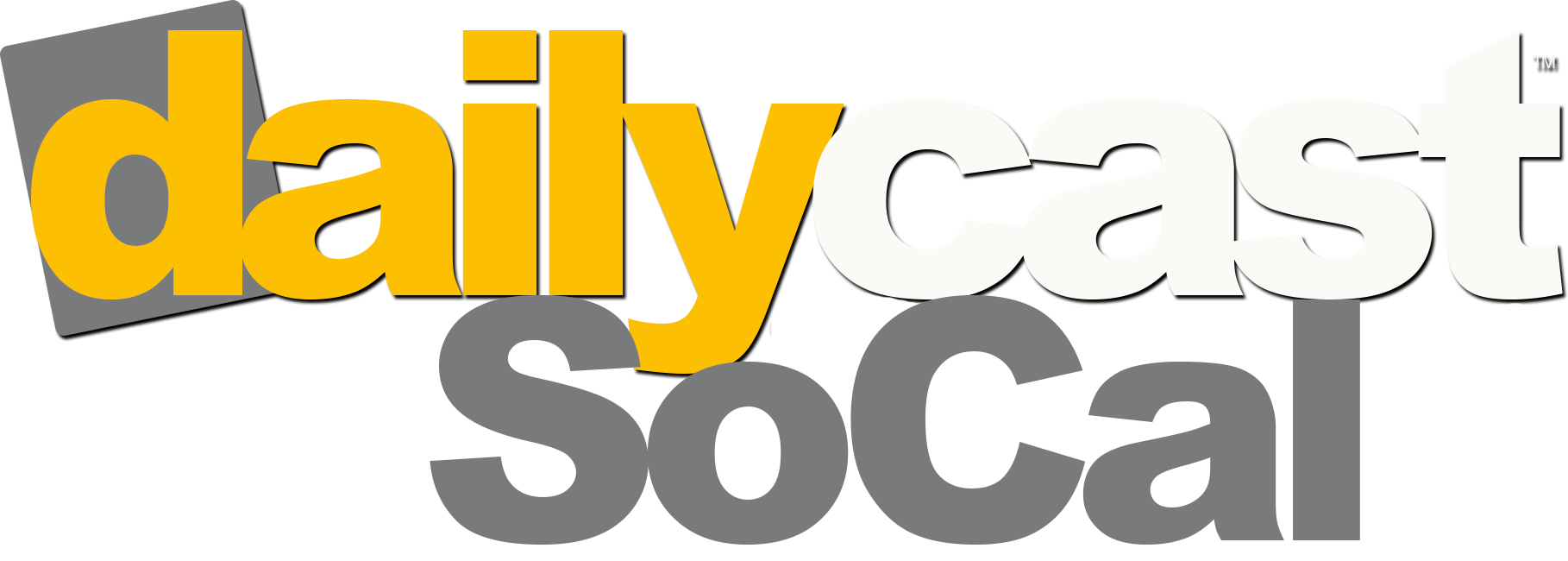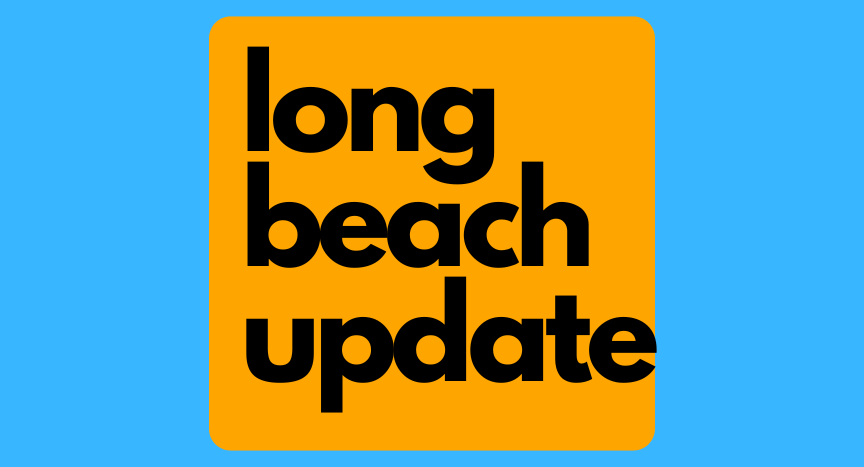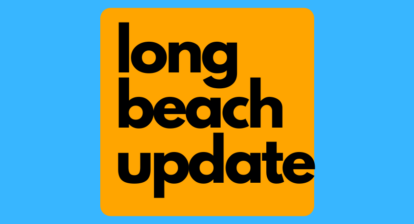North Long Beach pedestrian collision: what happened
A pedestrian was struck and injured at the intersection of E 55th Street and Atlantic Avenue in North Long Beach just before 6:00 p.m. on October 21, 2025. Local emergency units responded promptly. Reports indicate the individual was hit while crossing the intersection under circumstances that remain under investigation.
LA County Fire resources, including Engine Squad 163, arrived and provided medical aid at the scene. The pedestrian’s injuries were significant enough to require on-site treatment and possible transport to a nearby hospital. Law enforcement secured the area, and traffic was temporarily affected while responders assisted the injured person and documented the scene. As of now, investigators are evaluating factors that can contribute to this type of crash, including visibility near dusk, vehicle speed, and pedestrian right-of-way.
Our thoughts are with the injured pedestrian and all who were impacted by this event. Moments like this can be frightening and confusing. The information below is intended to help community members understand the process that typically follows a pedestrian collision in California, what rights may be available, and where to find official records and support.
What is known so far
– Time and place: Just before 6:00 p.m. on October 21, 2025, at E 55th Street and Atlantic Avenue in North Long Beach.
– Response: LA County Fire and law enforcement units responded; paramedics provided care on scene and managed safe operations in the intersection.
– Injury status: Injuries were reported but not described in detail. Based on the response described, hospital evaluation was plausible.
– Investigation: Ongoing. Authorities are assessing whether low-light visibility, driver speed, or right-of-way dynamics contributed to the collision.
Why dusk intersections can be high-risk for pedestrians
Intersections at dusk present well-documented visibility and speed-related risks for people walking. National roadway safety agencies have consistently noted that low-light conditions increase crash risk for pedestrians. The National Highway Traffic Safety Administration explains that visibility limitations and higher vehicle speeds both increase the severity and likelihood of pedestrian injuries. See NHTSA’s resources on pedestrian safety and speeding for context and data about these risk factors.
Relevant resources:
– NHTSA overview on pedestrian safety and common risk factors: https://www.nhtsa.gov/road-safety/pedestrian-safety
– NHTSA on speeding and crash risk: https://www.nhtsa.gov/risky-driving/speeding
What this means at a busy corridor like Atlantic Avenue around the evening commute:
- Reduced visibility: Low-angle sun and early darkness can make it harder for drivers to detect pedestrians, particularly if clothing blends into the background or if headlights, streetlights, and signal timing are not optimal.
- Shorter reaction time: Even modest increases in speed reduce the time drivers have to perceive and brake for someone in a crosswalk.
- Traffic complexity: Multiple lanes, turning vehicles, and signal phases at a large intersection can create conflicts if any user misjudges timing or right-of-way.
These are general safety dynamics and do not determine fault in this specific crash. They do, however, illustrate why investigators will scrutinize lighting, speed, signal phasing, and line-of-sight at this intersection.
How fault is investigated in California pedestrian crashes
California law places duties on both drivers and pedestrians. The Vehicle Code explicitly requires drivers to yield to pedestrians in marked and unmarked crosswalks at intersections and to exercise due care to avoid collisions. See California Vehicle Code section 21950.
– California Vehicle Code § 21950: https://leginfo.legislature.ca.gov/faces/codes_displaySection.xhtml?lawCode=VEH§ionNum=21950
Pedestrians also have responsibilities. Outside of crosswalks, pedestrians must yield the right-of-way to vehicles approaching so close as to constitute an immediate hazard, and may not suddenly leave a curb or place of safety into the path of a vehicle. See California Vehicle Code section 21954.
– California Vehicle Code § 21954: https://leginfo.legislature.ca.gov/faces/codes_displaySection.xhtml?lawCode=VEH§ionNum=21954
Typical investigative steps that help determine civil fault include:
- Scene documentation: Measuring skid marks, mapping vehicle and pedestrian positions, and photographing lighting conditions, sightlines, and any obstructions.
- Signal timing and phasing: Reviewing the traffic signal plan and timing logs for the intersection to see what indications were displayed at the time of impact.
- Speed assessment: Estimating vehicle speed through vehicle damage profiles, event data recorder downloads when available, or witness statements.
- Right-of-way analysis: Determining whether the pedestrian was within a crosswalk and what traffic control devices applied at the moment of the collision.
- Visibility conditions: Considering sunset timing, street lighting, headlight use, and any visual obstructions from parked vehicles or roadside features.
- Toxicology as relevant: Where indicated, evaluating whether impairment contributed, consistent with investigative protocols.
California uses a comparative fault framework in civil cases. If more than one party contributed to a collision, liability may be apportioned by percentage, and a pedestrian’s recovery can be reduced by their share of responsibility. The precise allocation depends on the facts and evidence developed in the investigation.
Injured pedestrian rights in California
In the civil context, an injured pedestrian may have claims against any negligent party who contributed to the crash. Potentially responsible parties can include a driver, an employer if the driver was working, and in some cases a public entity if a dangerous condition of public property was a substantial factor in causing harm. Each scenario is fact-specific and depends on evidence.
Time limits matter. California has a general two-year statute of limitations for injury claims measured from the date of injury. See Code of Civil Procedure section 335.1.
– CCP § 335.1: https://leginfo.legislature.ca.gov/faces/codes_displaySection.xhtml?lawCode=CCP§ionNum=335.1
Claims against public entities (for example, certain roadway design or maintenance allegations) have a much shorter claim presentation deadline in California. In many situations, a written government claim must be presented within six months of the incident. See Government Code section 911.2.
– Gov. Code § 911.2: https://leginfo.legislature.ca.gov/faces/codes_displaySection.xhtml?lawCode=GOV§ionNum=911.2
These deadlines can be affected by specific circumstances, including delayed discovery of an injury or the involvement of minors. Because missteps on timing can affect rights, it is prudent to get a free consultation with a qualified attorney before communicating with insurance carriers or attempting to file on your own.
Insurance considerations after a pedestrian collision
Multiple insurance coverages can be implicated after a pedestrian is struck:
- Driver liability coverage: The at-fault driver’s auto liability policy is typically the first source of recovery for medical bills, wage loss, and other damages. California’s Department of Motor Vehicles outlines mandatory liability insurance requirements for drivers. See DMV insurance information: https://www.dmv.ca.gov/portal/vehicle-registration/financial-responsibility/mandatory-insurance/
- Med-pay coverage: Some auto policies include medical payments coverage that can help pay for immediate medical costs regardless of fault, subject to policy limits.
- Uninsured/underinsured motorist (UM/UIM): If the driver lacks sufficient insurance, a pedestrian’s own UM/UIM coverage under a household auto policy may apply.
- Health insurance: Health plans can cover treatment, though they may later seek reimbursement from any settlement under plan rules and applicable law.
Before contacting any insurance company, it is generally wise to speak with an attorney in a free consultation to understand your rights. Statements given to insurers can be used later and may affect fault determinations and claim valuation. An attorney can also help coordinate benefits (for example, how med-pay and health insurance interact) and protect against premature releases or low settlement offers.
Evidence to preserve and practical next steps
Evidence at intersections changes quickly. Street lighting cycles, vehicles leave, and camera footage can overwrite within days. Preserving key information early can make a meaningful difference in understanding what happened.
- Photographs and video: Capture the crosswalk paint condition, signage, signal heads, line-of-sight at driver approach angles, street lighting, and any obstructions. Evening lighting snapshots around the same time of day can be helpful.
- Witness information: Collect names and contact details for anyone who saw the crash or the immediate aftermath.
- Nearby cameras: Identify businesses, residences, or traffic cameras that might have recorded the incident. Many systems overwrite in 24 to 72 hours; prompt requests are critical.
- Clothing and footwear: Preserve the clothing and shoes worn, as they can show impact points, visibility characteristics, and damage patterns.
- Medical documentation: Keep discharge instructions, imaging reports, and all bills. Follow recommended care plans, both for health and to create a complete record.
- Public records: California’s Public Records Act allows the public to request certain government records, which can include signal timing sheets, maintenance logs, and traffic studies. See the California Attorney General’s overview: https://oag.ca.gov/consumers/general/pra
If considering an insurance claim, consult with an attorney first to understand how to report the incident without compromising your interests. Early legal guidance can direct preservation letters to agencies and businesses to retain relevant records and video.
Where to obtain official reports and local assistance
Official documents help establish key facts such as time, location, involved parties, and initial observations. Different agencies may hold different records.
Police traffic collision report
If the investigating agency was the Long Beach Police Department, traffic collision reports and supplemental documents are maintained by LBPD’s Records section. The department’s official website provides information on reports and records: https://www.longbeach.gov/police/
If a sheriff’s unit served as the primary investigating agency, follow the instructions provided on the release form or business card given at the scene to request the report from the appropriate office. The agency identified on the information exchange form is typically the custodian.
Fire and paramedic records
LA County Fire Department incident reports and records of response times and units dispatched may be available consistent with department policy and state law. Start with the department’s official site for public records guidance: https://fire.lacounty.gov/
Medical Examiner-Coroner
In events involving fatalities, the Los Angeles County Department of Medical Examiner handles decedent identification, examination, and reports. For general information about case status and public records, visit: https://me.lacounty.gov/
City infrastructure and maintenance records
Signal timing plans, work orders, and maintenance logs for city-controlled intersections are often held by the local public works or transportation department. For Long Beach, start with the City’s Public Works site for information and public records pathways: https://www.longbeach.gov/publicworks/
When requesting records, include the exact intersection (E 55th St and Atlantic Ave), date (October 21, 2025), and approximate time (just before 6:00 p.m.) to help agencies locate responsive documents.
Common injuries in pedestrian crashes and early care
Pedestrians have no external protection against vehicle impact, so injuries can involve multiple systems. Even if someone feels relatively stable at the scene, symptoms can evolve over hours or days. Early medical evaluation protects health and creates documentation for any future claim.
- Head and brain injuries: Traumatic brain injuries can occur with direct head impact or from rapid acceleration and deceleration. The Centers for Disease Control and Prevention provides comprehensive information about symptoms and treatment considerations: https://www.cdc.gov/traumaticbraininjury/index.html
- Orthopedic injuries: Fractures of the lower extremities, pelvis, and upper limbs are common, along with ligament injuries.
- Spinal injuries: Cervical and thoracolumbar spine injuries may present with pain, numbness, or weakness and require prompt assessment.
- Internal injuries: Abdominal or thoracic trauma is possible, sometimes without obvious external signs.
- Psychological trauma: Anxiety, sleep disturbance, and post-incident stress can be part of the recovery journey and warrant attention and care.
Keep copies of all records, discharge summaries, imaging reports, and follow-up instructions. If paying for care is a challenge, discuss options with providers. Some will work with auto med-pay, provide billing to health plans, or consider deferred payment arrangements depending on circumstances.
Safety and infrastructure notes for the community
Busy corridors like Atlantic Avenue move high volumes of vehicles, buses, and people. Safety improvements can reduce crash risk without waiting for long-term construction. While unrelated to fault in this specific crash, these best practices reflect state and federal safety guidance:
- Lighting and visibility: Adequate street lighting and reflective, high-visibility crosswalk markings help drivers detect pedestrians at night and dusk.
- Signal timing: Leading pedestrian intervals, sufficient walk times, and protected left-turn phases can lower turning conflicts.
- Speed management: Lower speeds greatly reduce injury severity. NHTSA details how speeding increases crash risk and worsens outcomes: https://www.nhtsa.gov/risky-driving/speeding
- Community education: State campaigns emphasize alert driving, yielding at crosswalks, and safe crossing behaviors. See California Office of Traffic Safety pedestrian safety resources: https://www.ots.ca.gov/campaigns/pedestrian-safety/
Community members who observe signal malfunctions, damaged signage, or faded crosswalks at E 55th St and Atlantic Ave can report concerns through the City’s Public Works channels so issues can be assessed and addressed.
Key California laws and safety resources cited
– California Vehicle Code § 21950, drivers’ duty to yield to pedestrians: https://leginfo.legislature.ca.gov/faces/codes_displaySection.xhtml?lawCode=VEH§ionNum=21950
– California Vehicle Code § 21954, pedestrian duties outside crosswalks: https://leginfo.legislature.ca.gov/faces/codes_displaySection.xhtml?lawCode=VEH§ionNum=21954
– Code of Civil Procedure § 335.1 (two-year statute of limitations for injury): https://leginfo.legislature.ca.gov/faces/codes_displaySection.xhtml?lawCode=CCP§ionNum=335.1
– Government Code § 911.2 (six-month claim presentation to public entities): https://leginfo.legislature.ca.gov/faces/codes_displaySection.xhtml?lawCode=GOV§ionNum=911.2
– DMV insurance requirements overview: https://www.dmv.ca.gov/portal/vehicle-registration/financial-responsibility/mandatory-insurance/
– NHTSA Pedestrian Safety: https://www.nhtsa.gov/road-safety/pedestrian-safety
– NHTSA on Speeding risk: https://www.nhtsa.gov/risky-driving/speeding
– CDC Traumatic Brain Injury: https://www.cdc.gov/traumaticbraininjury/index.html
– California Attorney General on Public Records Act: https://oag.ca.gov/consumers/general/pra
– Long Beach Police Department: https://www.longbeach.gov/police/
– LA County Fire Department: https://fire.lacounty.gov/
– LA County Medical Examiner: https://me.lacounty.gov/
– Long Beach Public Works: https://www.longbeach.gov/publicworks/
Commentary from Gosuits Long Beach, California Personal Injury Attorney
We extend our sincere concern to the person injured and to everyone affected by the collision at E 55th Street and Atlantic Avenue. This article is intended for general information and education. It is not a substitute for personalized guidance about any specific situation.
From a civil injury perspective, the investigative focus on visibility, speed, and right-of-way is appropriate, especially at dusk. California law requires drivers to yield to pedestrians in crosswalks and to use due care to avoid collisions. At the same time, pedestrians have duties when crossing outside crosswalks. Determining how these rules applied in this incident will require precise evidence: signal timing, vantage points for approaching drivers, lighting at the time, and objective data such as any available camera footage or event data recorder information.
Insurance carriers and large corporations involved after a crash often move quickly to shape the narrative. Adjusters may request recorded statements, early medical authorizations, or broad releases. Without context, people can unknowingly say things that are taken out of context or accept offers before the full picture of injuries and long-term needs is clear. This is especially concerning when symptoms evolve over several days, as frequently happens with concussions or soft tissue injuries.
A free consultation with a seasoned injury attorney can provide clarity on rights and next steps before any insurance conversations. It can also help with preserving time-sensitive evidence and making targeted public records requests for signal plans, maintenance logs, and related data from the City and responding agencies. Early guidance does not lock anyone into a decision, but it can prevent avoidable mistakes and protect options while the facts are being developed.
Why taking action now matters
– Identify the investigating agency and request records: Confirm which law enforcement agency took the collision report and initiate the request process. Doing this early helps ensure access to the most complete version once it is released.
– Preserve digital evidence: Nearby businesses and residences often overwrite video within days. Prompt outreach makes it more likely that potentially useful footage is saved.
– Document medical care from day one: Keep every bill, imaging report, and instruction sheet. Gaps in treatment can be used to question the seriousness of injuries later.
– Mind the deadlines: California’s two-year statute for injury claims is strict, and government claims for public entity issues can be due in as little as six months. Acting early reduces the risk of missing a deadline.
– Speak with an attorney before the insurance company: What is said to an insurer can be used later. An early, no-cost consultation can help frame communications, protect confidentiality, and prioritize evidence preservation.
– Check the intersection environment: Note lighting, crosswalk visibility, and signage at the same time of day as the crash. These observations can guide targeted records requests for signal timing and maintenance.
Timely steps promote safety, support informed decision-making, and help ensure that the facts are developed while memories and records remain fresh.
This article is provided solely for general informational and educational purposes. It is not intended as legal advice and should not be relied upon as such, particularly by individuals affected by the incident discussed. Reading this article does not create, nor is it intended to create, an attorney–client relationship.
An attorney–client relationship with our firm can only be established through the execution of a written contingency fee agreement signed by both the client and the law firm. If you are a victim of this incident, you should not interpret the information herein as legal advice. Instead, we strongly encourage you to contact an attorney of your choice to obtain a proper consultation tailored to your specific situation.
Some or all of the information found on this site maybe generated by AI. Images of the scene of the incident are not real images and are created by AI. We do not guarantee the accuracy of the research and infromation found here. You agree to indemnify, defend, and hold Gosuits and the affliated companies harmless for damages or losses caused by you or another party due to any access to or use of the Services on this website or any information contained therein whether authorized or unauthorized. We will not be liable for any information or access caused by unauthorized disclosure of your information by any third party. You agree to notify us in writing immediately if you suspect any unauthorized use of or access of your information from this website by a third party.
We rely on the information found on the net and do not always have first hand knowledge of the matters. If you find any information here inaccurate or offensive contact us and we will have it immediately removed.
By using this website you are agreeing to these terms and conditions along with our terms and conditions on our disclaimer page. https://gosuits.com/terms-use-disclaimer/
If you would like this article removed, please call 800-972-4355 and ask for Sean Chalaki, who will assist you with your request.


